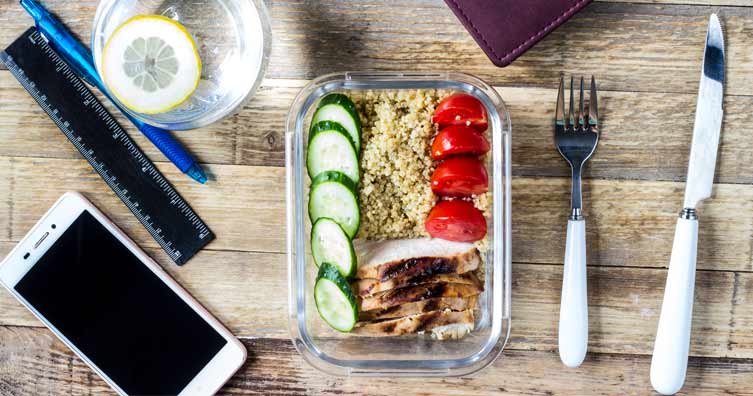- Empty cart.
- Continue Shopping
How to Create a Healthy Meal Planning Routine

1. Set Clear Dietary Goals
Before you begin meal planning, define your dietary goals. Are you looking to lose weight, build muscle, manage a medical condition, or simply eat more balanced meals? Knowing your objectives will guide your meal planning decisions and help you choose the right foods.
2. Assess Your Current Eating Habits
Take stock of your current eating habits. Identify areas where you can make improvements, such as reducing processed foods, increasing vegetable intake, or controlling portion sizes. This self-assessment will serve as a foundation for your meal planning routine.
3. Create a Weekly Schedule
Establish a weekly meal planning schedule that works for you. Choose a day and time each week to sit down and plan your meals. Consistency is key to developing a meal planning habit.
4. Gather Resources
Collect the tools and resources you need for meal planning:
- Recipes: Compile a list of favorite recipes, cookbooks, or online resources that align with your dietary goals.
- Meal Planner: Invest in a physical meal planner or use digital tools and apps designed for meal planning. These can help you organize your weekly meals and grocery lists.
5. Plan Your Meals
When planning your meals:
- Balance Nutrients: Ensure that each meal includes a balance of macronutrients (carbohydrates, protein, and fats) and incorporates a variety of fruits and vegetables.
- Portion Control: Pay attention to portion sizes to avoid overeating. Use measuring cups or a kitchen scale if necessary.
- Plan for Leftovers: Make extra servings for dinner to have as leftovers for lunch the next day, saving you time and money.
- Consider Dietary Preferences: Accommodate dietary preferences and restrictions, such as vegetarian, vegan, gluten-free, or allergen-free diets.
6. Create a Shopping List
Once your meals are planned, create a comprehensive shopping list. Organize it by food categories (e.g., produce, dairy, pantry staples) to streamline your grocery shopping experience.
7. Shop Mindfully
When grocery shopping:
- Stick to Your List: Resist the urge to impulse buy. Stick to your planned purchases to avoid unnecessary spending and unhealthy choices.
- Read Labels: Check food labels for nutritional information and ingredient lists to make informed choices.
- Buy Fresh Produce: Opt for fresh fruits and vegetables when possible. Choose seasonal and locally sourced options for optimal freshness and flavor.
8. Meal Prep and Batch Cooking
To save time during the week and ensure you have healthy options readily available:
- Meal Prep: Spend some time each week prepping ingredients like chopping vegetables, marinating proteins, or making sauces and dressings.
- Batch Cooking: Cook larger batches of meals and freeze portions for future use. This is especially helpful for busy days when you don’t have time to cook.
9. Stay Flexible
Flexibility is essential in meal planning. Life can be unpredictable, and there will be days when you can’t follow your plan precisely. Be adaptable and willing to make adjustments as needed.
10. Monitor Your Progress
Regularly assess your meal planning routine to ensure it aligns with your goals and remains sustainable. Consider the following:
- Nutrient Intake: Are you meeting your nutritional needs?
- Variety: Are you incorporating a wide range of foods to ensure a diverse nutrient intake?
- Enjoyment: Are you enjoying your meals and finding satisfaction in your dietary choices?
- Budget: Is your meal planning routine cost-effective, or are there areas where you can save money?
11. Seek Support and Accountability
If maintaining a healthy meal planning routine becomes challenging, consider seeking support from friends, family, or a nutritionist. Having someone to share the journey with can help you stay motivated and accountable.
12. Celebrate Your Successes
Acknowledge your achievements in meal planning and the positive changes you’ve made in your diet. Celebrate your successes, whether it’s sticking to your plan for a month, trying new recipes, or reaching a particular health milestone.
In Conclusion, A healthy meal planning routine is a valuable tool for achieving your dietary goals and maintaining a balanced lifestyle. It requires some initial effort and organization but ultimately leads to better food choices, improved nutrition, and reduced stress around mealtime. Remember that meal planning is a flexible process, and it’s essential to adapt it to your individual needs and preferences. By following the steps outlined in this guide, you can establish a sustainable meal planning routine that supports your well-being and helps you enjoy delicious, nutritious meals every day.








